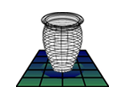The Stansted Framework Project
Framework Archaeology, 2009. https://doi.org/10.5284/1000029. How to cite using this DOI
Data copyright © Framework Archaeology unless otherwise stated
This work is licensed under the ADS Terms of Use and Access.
Primary contact
Wessex Archaeology
Portway House
Old Sarum Park
Salisbury
SP4 6EB
UK
Tel: 01722 326867
Fax: 01722 337562
Resource identifiers
- ADS Collection: 342
- DOI:https://doi.org/10.5284/1000029
- How to cite using this DOI
Downloads
Images | GIS | Stratigraphic | Finds | Environmental | Reports | Survey Data
Reports:
Below are the specialist reports and illustrations prepared for publication and presented as .pdf files. These are largely as written by the specialists themselves, and have undergone only minor editing in order to ensure internal consistency (predominantly of site codes, site names etc).
These reports are intended to be used both in conjunction with the published text (which directs the interested reader to particular chapters where appropriate) and with the accompanying GIS packages, which allows the reader to look at finds distributions by type and date and to search for individual features or deposits containing key assemblages.
| 12 - Introduction to CD | 334 Kb | |
| 13 - Coins | 367 Kb | |
| 14 - Iron Age, Roman and Saxon metalwork | 3 Mb | |
| 15 - medieval and post-medieval metalwork | 4 Mb | |
| 16 - Slag | 663 Kb | |
| 17 - Prehistoric pottery | 1 Mb | |
| 18 - Iron Age and Roman pottery | 1 Mb | |
| 19 - Medieval and post-medieval pottery | 926 Kb | |
| 20 - Ceramic Building Material | 587 Kb | |
| 21 - Fired clay | 536 Kb | |
| 22 - Clay pipes | 235 Kb | |
| 23 - Glass | 645 Kb | |
| 24 - Flint | 1 Mb | |
| 25 - Worked stone | 791 Kb | |
| 26 - The worked wood | 1 Mb | |
| 27 - Cremated bone | 435 Kb | |
| 28 - Inhumed bone | 551 Kb | |
| 29 - Environmental overview | 771 Kb | |
| 30 - Soil micromorphology | 857 Kb | |
| 31 - Palynological analysis | 1 Mb | |
| 32 - Animal bones | 915 Kb | |
| 33 - marine shell | 1 Mb | |
| 34 - charred plants | 776 Kb | |
| 35 - Charcoal | 688 Kb | |
| 36 - Insect remains | 770 Kb | |
| 37 - Radiocarbon dating | 456 Kb | |
| Supplementary maps | 14 Mb |





